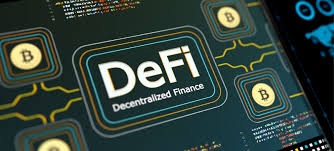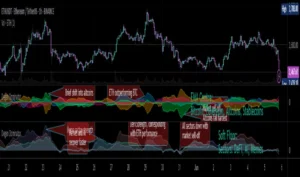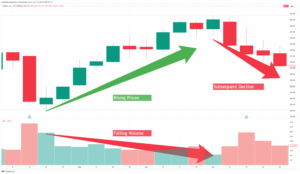The decentralized finance (DeFi) space was born out of a vision for open, permissionless, and trustless financial systems. It promised a world without intermediaries, where smart contracts governed the flow of capital and users held full control over their assets. But as billions of dollars flooded in, so did the hackers. Security breaches and protocol exploits became recurring headlines — from flash loan attacks to rug pulls and governance manipulations.
Now, with a growing user base and increasing institutional attention, the key question arises: Is DeFi growing up — or are we still in the Wild West?
The Evolution of DeFi Hacks: From Opportunism to Sophistication
In DeFi’s early days (circa 2019–2020), the attacks were relatively simple. Poorly written code, unaudited contracts, and the naivety of a rapidly expanding user base left protocols vulnerable. But as the space matured, so did the attackers. What used to be minor bugs being exploited for thousands turned into coordinated heists draining hundreds of millions.
High-profile examples include:
- Poly Network (2021): $600M stolen (later returned).
- Ronin Network (2022): $620M lost to an exploit in a cross-chain bridge.
- Curve Finance (2023): A reentrancy bug in stable pools led to a sharp decline in TVL and token value.
While each incident differed in nature, they all pointed to a critical gap in protocol resilience and risk management.
Are the Attacks a Sign of Immaturity — or Necessary Growing Pains?
Let’s face it: every new financial paradigm comes with teething issues. Traditional finance (TradFi) has had its share of frauds, bank runs, and systemic failures. DeFi is no different — but its transparency exposes every crack in real-time.
That said, the frequency of exploits is gradually declining relative to total value locked (TVL). This suggests an important trend: DeFi protocols are learning.
- Audit culture is becoming standard.
- Bug bounty programs are now sizable and well-funded.
- Formal verification and real-time monitoring tools are being adopted more widely.
Yes, security breaches still occur — but the industry response has become more robust, quicker, and community-driven.
Smart Contract Security: From Afterthought to Priority
One of the most promising signs of DeFi’s maturation is the shift in mindset toward security-by-design. Protocols now:
- Undergo multiple third-party audits.
- Participate in code peer review programs.
- Leverage on-chain insurance like Nexus Mutual to mitigate user risk.
For instance, MakerDAO, Aave, and Uniswap have established themselves not only through innovation but also by maintaining an impressive security track record. These projects understand that longevity in DeFi is tied directly to trust, and trust is built through security.
Additionally, the rise of modular and composable smart contract libraries like OpenZeppelin has reduced risk exposure by offering battle-tested building blocks for developers.
On-Chain Insurance and Risk Mitigation
What happens when security fails?
Enter DeFi-native insurance, which is becoming a critical layer in the DeFi stack. Projects like:
- Nexus Mutual
- InsurAce
- Unslashed Finance
…offer users protection against protocol-specific risks, exchange failures, and even oracle manipulation.
Although these services are still growing, they represent an important market signal: users are willing to pay for peace of mind, and protocols must integrate risk coverage if they want to retain users long-term.
Regulation’s Role: Friend or Foe?
Security concerns in DeFi also invite regulatory scrutiny. While many fear a crackdown could stifle innovation, others believe regulation may bring much-needed standardization, particularly around KYC, auditing, and compliance standards.
Notably, some jurisdictions are now experimenting with regulated DeFi sandboxes, such as:
- Monetary Authority of Singapore (MAS) launching pilot programs with DeFi protocols.
- European Union’s MiCA (Markets in Crypto-Assets Regulation), which, while not DeFi-specific, lays groundwork for token regulation that could extend to DeFi in the future.
The takeaway? Regulatory clarity may force DeFi to mature faster, especially regarding consumer protections and disclosure standards.
The Role of the Community: Guardians of the Protocol
One often-overlooked aspect of DeFi security is the role of active communities and DAOs (Decentralized Autonomous Organizations). Protocols like Compound and Balancer have demonstrated that when communities are empowered, they can act swiftly in times of crisis — from patching bugs to reallocating funds and updating governance rules.
The DeFi ethos relies on decentralization — and with that comes shared responsibility. As governance participation increases, community-led risk management is becoming the norm.
What’s Next: The Road to DeFi 2.0 and Beyond
DeFi is not perfect — but it’s evolving fast. The next generation of protocols is embracing:
- Permissioned DeFi: Balancing decentralization with compliance.
- Self-auditing smart contracts: Code that monitors and adjusts itself in real-time.
- AI-assisted security monitoring: Detecting anomalies in real-time across on-chain activity.
Additionally, with the rise of restaking and modular blockchain architecture, developers are moving toward shared security models, reducing attack surfaces for individual protocols.
Final Thoughts: Maturing Through Adversity
Security breaches and hacks are not a sign that DeFi is doomed — they’re signs that it’s being tested under real-world stress. The most resilient protocols are emerging stronger, better equipped, and more trusted.
So, is DeFi growing up?
It’s not there yet — but it’s well on the way. Like any complex system, maturity is a process. And with each hack, fix, and upgrade, DeFi edges closer to becoming not just an alternative to TradFi, but a formidable, decentralized foundation for global finance.









